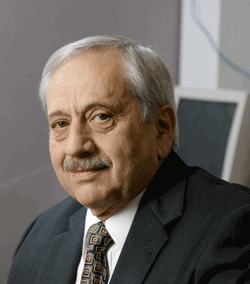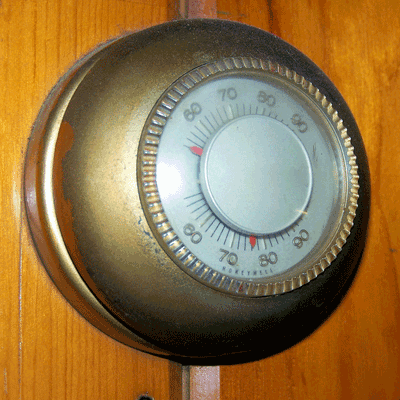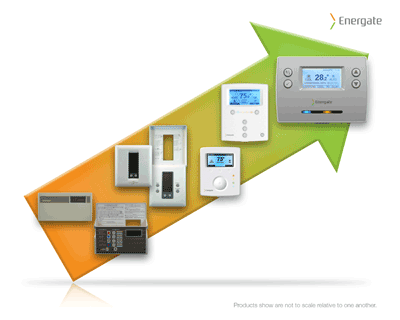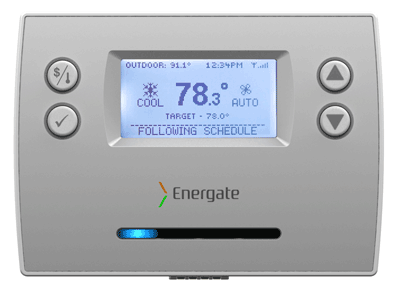Interview with the ‘Father of the Smart Thermostat’ — Jerry Kathnelson
An industry icon talks about the development of the digital thermometer
BY PAUL O’SHEA
Senior Editor
Jerry Kathnelson is vice president of customer development at Energate Inc. Based in Ottawa, Energate is a leading provider of demand response and home energy management solutions including smart thermostats, energy displays, wireless communications, gateways, load switches, and utility applications software.
Known as the “Father of the Smart Thermostat,” Kathnelson was working at the National Research Council Canada (NRC) during the oil embargo of the 1970s when he and his colleague Chris Kirby saw the need for a more intelligent approach to residential energy management, and set out to create the industry’s first all-digital thermostat. Some of Kathnelson’s pioneering work remains in Energate’s latest generation of smart thermostats: the Foundation Home Energy Gateway. Here are some excerpts from our recent interview with Jerry.

Jerry Kathnelson, a pioneer in digital thermostats, is known as the father of the smart thermostat.
Electronic Products : Tell me how this all got started.
JK : In 1973 there was an oil embargo, and in Canada at the time, home heating consumed the most energy, and most of that was oil. So the Canadian government issued a mandate for any ideas that would save energy, especially oil. I had always favored the idea of turning down the thermostat at night when people are sleeping and while homes are unoccupied. But very few homes at the time even had a thermostat. People would instead just manage the temperature manually by turning the furnace on or off.
Electronic Products : What were thermostats like at that time?
JK : The state of the art then was a bi-metal strip with a mercury bottle contact switch—technology that had not changed much in almost 100 years (see Fig. 1 ). The strip would bend in response to changing temperatures, and when the attached bottle tilted, the mercury would either make or break the circuit turning the furnace on or off.
Changing the temperature setting required actually changing the angle of the mercury switch by rotating the dial. Accuracy was at best, only within a few degrees, so comfort was not necessarily guaranteed. Various electromechanical systems were employed to provide for timed settings, but these were all quite bulky, noisy, very expensive and did not work with existing wiring, so it was usually necessary to run line voltage to these thermostats.

Fig. 1: Mercury Switch Thermostat. This old-fashioned analog thermostat was purely mechanical with a temperature-sensitive bi-metal strip attached to a mercury bottle contact switch.
Electronic Products : What did you do to address these shortcomings?
JK : Our market research indicated we needed a drop-in replacement for the existing thermostat, which was a purely mechanical device requiring no power. The research also indicated that people wanted greater precision and the ability to set the temperature differently at different times. In the mid-70s liquid crystal displays, triacs, and single-chip microprocessors were just becoming commercially available. So for us this was a “perfect storm” of an old need meeting new technologies. Because these components all required power and we did not want to use a battery or require any rewiring, we developed technology to “steal” sufficient power from the current traversing the contact circuit. This was one of the first examples of harvesting ambient energy, which makes it perhaps our most significant breakthrough, but there were others.
Electronic Products : What were some of the others?
JK : We solicited additional input from the engineering departments of the major manufacturers of HVAC equipment, and in fact, these companies became the initial market for our digital thermostats. They also wanted the thermostat to be programmable, which meant it would require a processor, some memory and a digital display capable of showing both times and temperatures. And as a relatively new digital device, these OEMs wanted it to be totally dependable with a very reliable electronic switch because the thermostat would be branded with their logos.
Electronic Products : What are some of the changes you have seen over the years in smart thermostats?
JK : In most areas the changes have been evolutionary, not revolutionary. Subsequent generations had more powerful processors and substantially more RAM to accommodate more sophisticated programming, and larger and more readable displays to show more information, such as menus, text messages and even the weather. Perhaps the biggest differences are the need for wireless networking and the need to control other loads via separate networked load control switches. These changes make the smart thermostat more of a home energy management system that must also now interact with the smart grid.
Electronic Products : Is there anything about the heritage of the original digital thermostat that continues to exist in Energate’s latest-generation Foundation Home Energy Gateway?
JK : That’s a great question with a rather interesting answer. Technology may change quite dramatically, but people don’t. Much of our original work involved understanding how people perceive changes in temperature.
At the time we wanted to do more than merely digitize an analog device; we wanted to create a whole new standard in comfort. So we expended considerable effort to understand these perceptions, and how to incorporate our findings into the temperature measurement and control algorithms (see Fig. 2 ).
Many of the original algorithms survive to this day in Energate’s control software, including in Foundation. Of course, we have also continually improved and tweaked them over the years to the point where Energate’s full suite of algorithms is now considered to be the best the industry.

Fig. 2: Evolution of Foundation: The evolution of digital thermostats into today’s smart thermostats required the addition of much more powerful processors and more memory to handle the more sophisticated applications, along with larger displays and wireless networking.
Electronic Products : Why are these algorithms so important?
JK : There are inherent conflicts among comfort, conservation and convenience. In theory a thermostat could be replaced by a wall switch, but there would be limited comfort and certainly no convenience in such a control system. So there is a balancing act required to maintain comfort while conserving energy in a way that’s easy for the user to control (see Fig. 3 ). Getting this balance just right is really critical, and that’s why we’ve put so much effort into the algorithms.

Fig. 3: Foundation: Energate’s latestgeneration smart thermostat, the Foundation Home Energy Gateway, is a complete home energy management system.
Electronic Products : What changes do you see coming in the future for home energy management?
JK : Utilities are the driving force today for using smart thermostats because they have a need to reduce the peak demand for electricity, which usually occurs late in the afternoon and early evening on hot summer days. In the future, as people begin to understand the importance of energy conservation as a way to save money, and even help save the planet for that matter, consumers will become the driving force, and will begin demanding more sophisticated capabilities.
One such change we are seeing already is the desire to control the smart thermostat remotely from an app on a smarphone or tablet. We are also seeing an expectation for color touchscreen displays on the smart thermostat to provide a user interface similar to that of the mobile apps. Another is the desire to control other loads, and a home energy gateway like Foundation is the perfect platform for doing that. These are the kinds of changes that continue to make home energy management an exciting field after so many years. ■
Advertisement
Learn more about Energate





